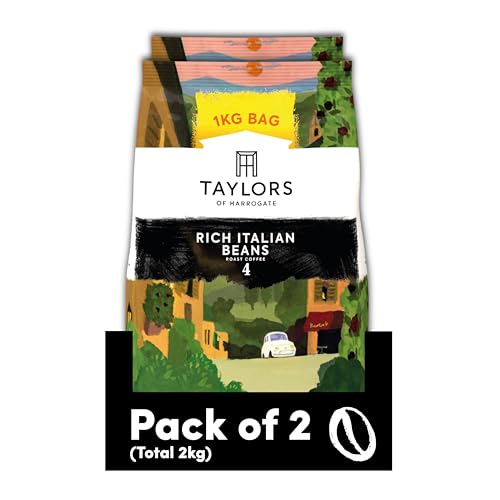Which Coffee Beans Are the Best?
When it comes down to choosing a great cup of coffee, the kind of beans you choose makes the difference. Each kind has its own distinct flavor that compliments a variety of drinks and food recipes.
Panama leads the pack with their rare Geisha beans, which score high in cupping tests, and are also expensive at auction. Ethiopia and specifically Yirgacheffe, isn't far behind.
1. Geisha Beans from Panama
Geisha beans are the best coffee beans available anywhere in the world. Geisha beans are highly prized for their distinctive aroma and flavor. These rare beans, grown at high altitudes, undergo an exclusive process that gives them their signature flavor. The result is a cup with a smooth, rich flavor.
The Geisha coffee plant is native to Ethiopia It was first introduced in Panama in 1963. Geisha coffee is famous for its excellent flavor and taste. Geisha beans can be costly due to the labor required to cultivate them. Geisha coffee plants are more difficult to grow because they require higher elevations and specific climate conditions.
Geisha beans should be handled with care since they are delicate. They should be sorted with care and meticulously prepared for roasting. Otherwise, they may turn acidic and bitter.
The Janson Coffee Farm is located in Volcan. The farm is committed to protecting the environment and specializes in producing top-quality beans. They make use of solar panels to generate energy recycling water and waste materials, and employ enzyme microbes to improve soil. They also plant trees and use recycled water for washing. The coffee they make is a Washed Geisha and was awarded the highest score at the Panama Coffee Competition.

2. Ethiopian Coffee
Ethiopia is a major coffee producer with a long tradition of producing some of the best brews. Ethiopia is the fifth largest producer of coffee in the world. Their beans are highly appreciated for their distinctive fruity, floral flavors. Contrary to other coffees, Ethiopians taste their best when they are roasted to a medium roast. This allows the delicate floral notes to stay while highlighting their citrus and fruity flavors.
While Sidamo beans are renowned for their fresh acidity and citric acidity, coffees from other regions such as Yirgacheffe and Harar are also considered to be among the best in the world. Harar is one of the oldest and most well-known varieties of Ethiopian coffee and has distinct mocha and wine flavor profile. Coffees from the Guji region are also known for their distinct flavors and distinct Terroir.
Another type of coffee from Ethiopia is known as natural process, and it is made using dry-processing instead of wet-processing. Wet-processing involves washing coffee beans that tends to remove some of its fruity and sweet taste. Natural process Ethiopian coffees were not as well-known as their washed counterparts. They were more commonly used to brighten blends rather than being sold on the specialty market. Recent technological advances have led to better quality natural Ethiopians.
3. Brazilian Coffee
Brazilian Coffee is a rich mix of various types of beans. coffee beans delivery is characterized as having a low acidity. It has a sweet taste with subtle cocoa. The flavors vary based on the region and state it is grown. It is also renowned for its nutty and citrus notes. It is good for those who enjoy medium-bodied coffee.
Brazil is the world's biggest exporter and producer of coffee. Brazil produces more than 30 percent of the world's total coffee beans. Brazil's economy is heavily reliant on this major agricultural industry. Brazil has a climate ideal for growing coffee and there are fourteen major coffee-producing regions.
The primary beans that are used in Brazilian coffee are Catuai, Mundo Novo, Obata, and Icatu. They are all varieties of Arabica. There are also a variety of hybrids which include Robusta. Robusta is the name of a coffee plant that originated in Sub-Saharan Africa. It's not as delicious as Arabica coffee, however it is more easy to grow and harvest.
It is important to note that slavery continues to exist in the coffee industry. Slaves in Brazil are often subjected to lengthy and exhausting work days and may not have adequate housing. The government has taken steps to address this problem, including establishing programs to help farmers pay off their debts.
4. Indonesian Coffee
The best Indonesian coffee beans are well-known for their dark, earthy flavor. The volcanic ash mixed with the soil gives them a robust body and low acidity that makes them perfect for blending with more acidic beans from Central America and East Africa. They also react well to darker roasting. Indonesian coffees are smoky and complex in flavor with flavors of leather, wood tobacco, and ripe fruit.
The major producers of coffee in Indonesia are located on Java and Sumatra and some are from Sulawesi, Bali, and Papua New Guinea. Many farms in this region use a wet-hulling process. This is different from the washed processing method that is prevalent in most of the world, where the cherries of coffee are de-pulped and then washed prior to drying. The hulling process reduces amount of water in the coffee, which limits the impact that rain can have on the quality of the finished product.
Mandheling is among the most sought-after and renowned varieties from Indonesia. It comes from Toraja. It is a full-bodied, robust coffee with hints of candied fruit and intense chocolate flavors. Gayo and Lintong are also types of coffee that come from this region. They are often wet hulled and have a full-bodied and smoky flavor.
